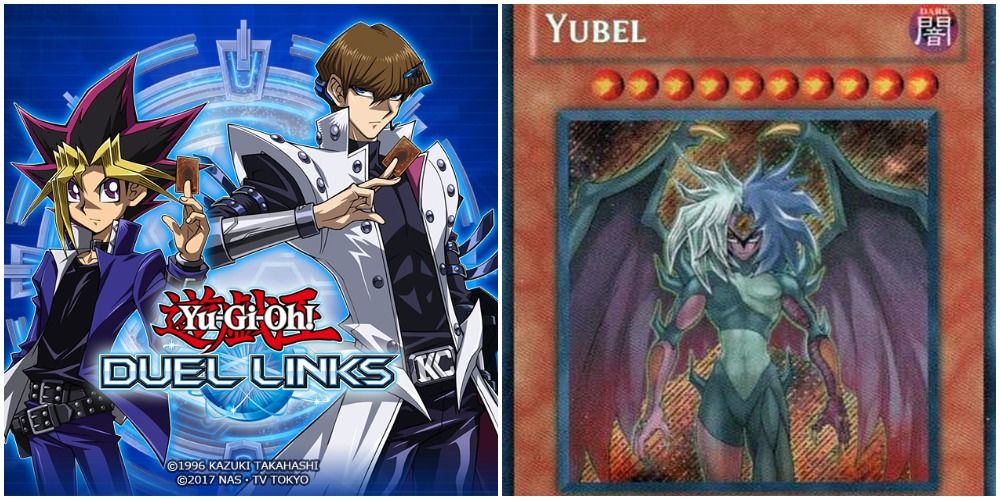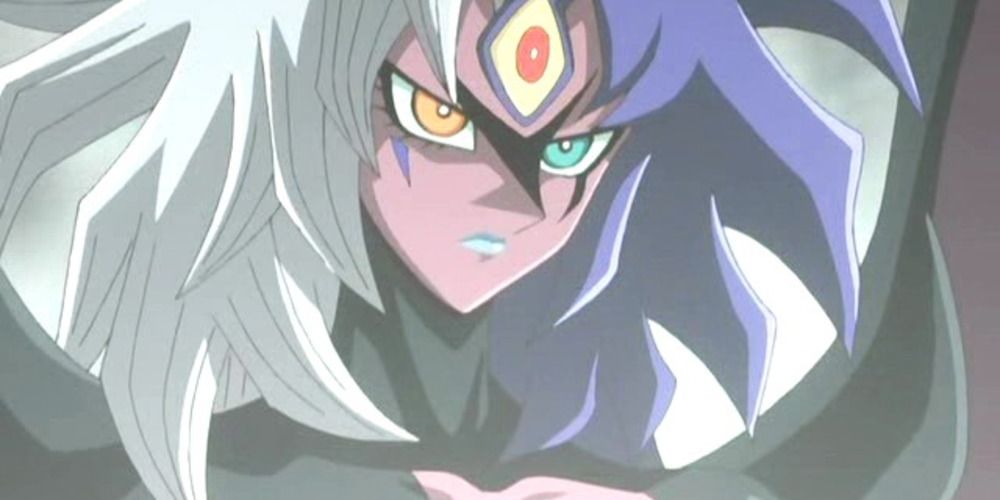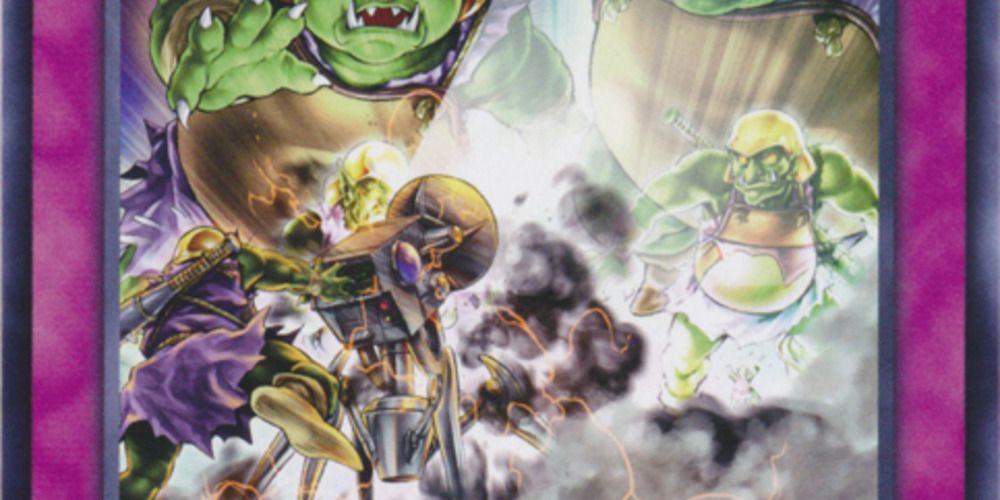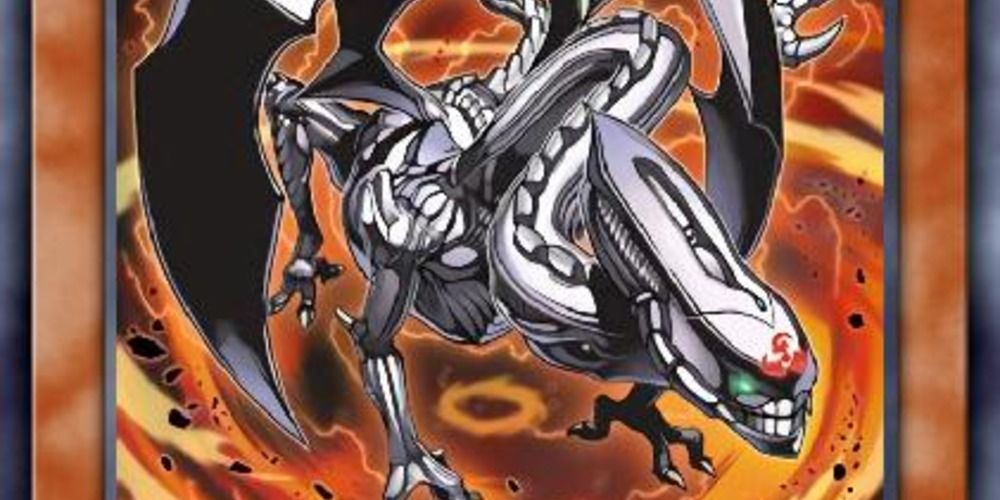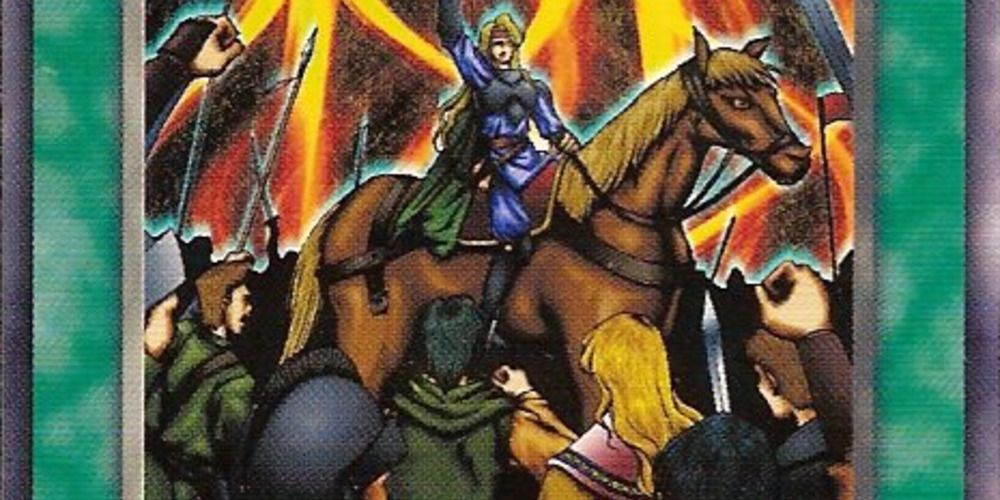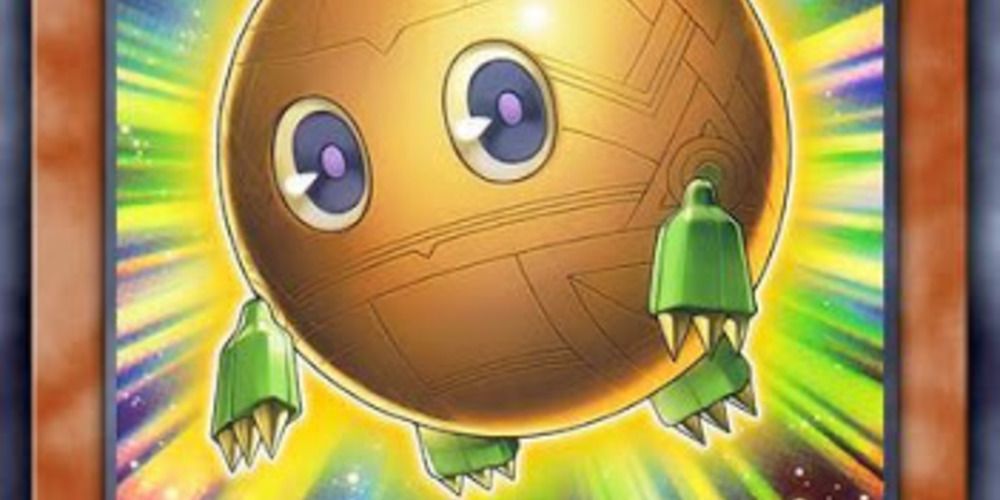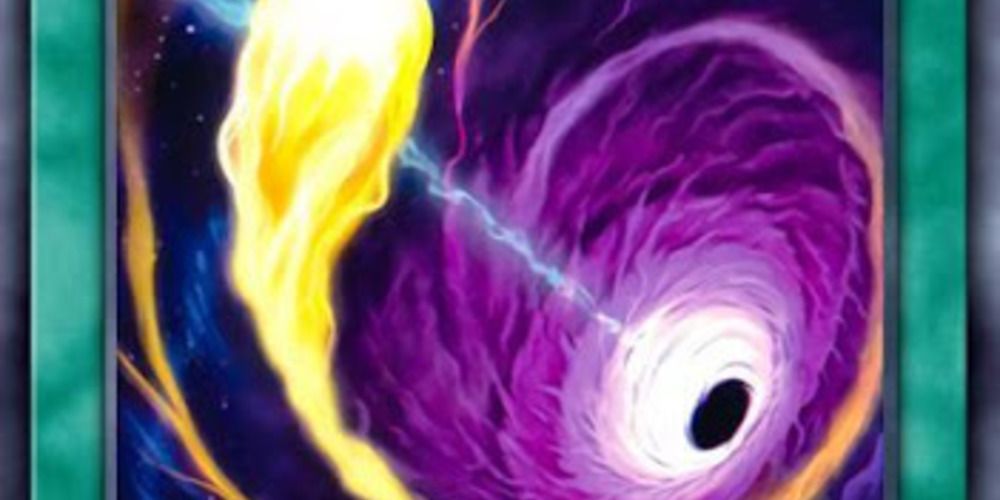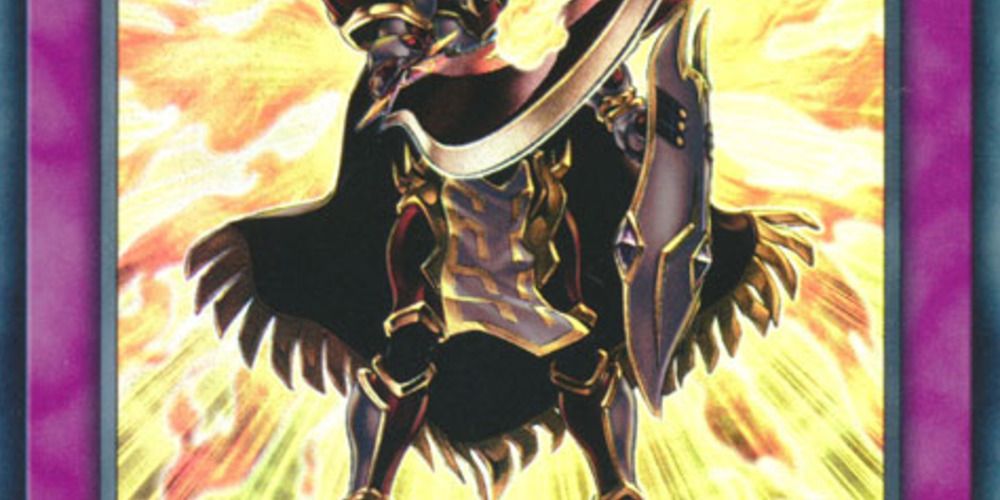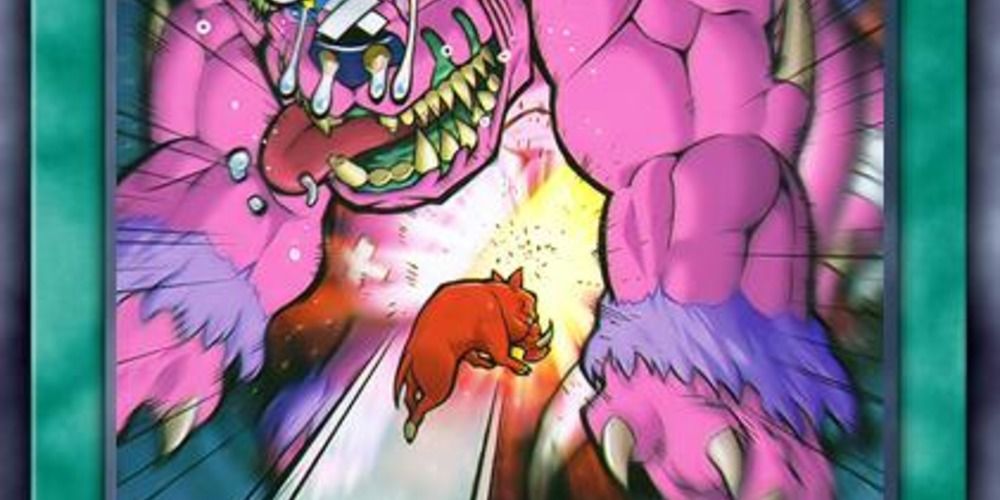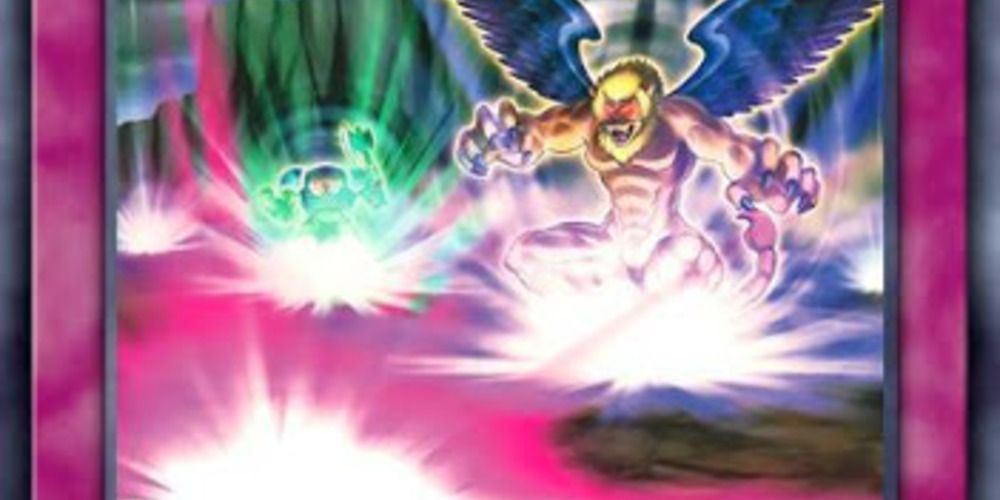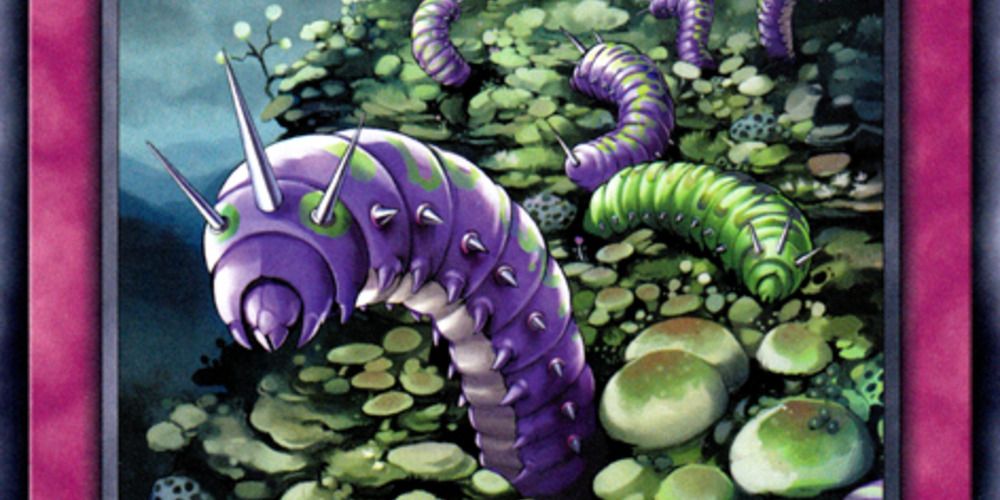Released to the world in January 2017, Yu-Gi-Oh! Duel Links is an online version of the ever-popular Yu-Gi-Oh! TCG, though in this instance, it follows the Speed Duels format of play with slightly different rules and available cards than the original game. These changes in rules make the game closer to its anime and manga counterparts, with fewer life points and available card spaces, as well as far fewer negation effects that make the standard game so hard to get into for new or returning players.
Because of this change in rules, it has allowed for older cards which weren't able to shine to have a change in the spotlight, as the slower nature of the game and more focus on monster vs monster battles means more niche cards are able to do what they wanted all along.
10 Yubel
Yubel has tried to be implemented into the TCG since its release, but it was never able to take off. The closest the Yubel series ever came to being a decent deck was during the release of the Fire King archetypes support cards, most notably Fire King Island, which would allow players to destroy cards in their hands in order to search for another Fire King card.
Unfortunately, even pure Fire King decks were only briefly able to hold their own in the TCG, as they were released around the same time as Mermails, which dominated the format at the time. With smaller deck sizes and a heavier focus on battle, this has allowed Yubel to live up to its reputation and actually be a good card in Duel Links.
9 Massivemorph
On paper, Massivemorph is a bad card no matter which way you look at it, particularly when it comes to the original version of Yu-Gi-Oh!. Doubling a monster's attack but preventing it from attacking directly isn't a good way of dealing with big monsters, particularly when cards like Dimensional Prison are around in the TCG, but it has found a place in Duel Links as a very good card.
The aforementioned focus on monster vs monster battles, as well as the lack of spot removal and smaller field sizes, means that it's a lot harder to get rid of a monster from your own side of the field than it is in the TCG.
8 Koa'ki Meiru Maximus
The Koa'ki Meiru archetype really tried to be a good deck and it is one of the more bloated of older archetypes in the game. Centered around the Iron Core of Koa'ki Meiru Spell card, each monster had a fairly decent effect but was let down by their maintenance costs, which meant either revealing a card in your hand or destroying the monster in question.
As the boss monster of the archetype, Koa'ki Meiru Maximus is pretty bad. Although it is able to summon itself fairly easily, its maintenance cost is much harder to maintain in standard TCG decks. In Duel Links, however, Koa'ki Meiru Maximus became so good that it resulted in both itself and Iron Core ending up on the Forbidden and Limited List for Duel Links.
7 Restructor Revolution
In the early days of Yu-Gi-Oh!, stall burn decks were a dime a dozen, since there weren't anywhere near as much negation effects and the majority of monsters that were used had either no effect or very specific effects.
Fast forward to the present and burn decks are all but extinct in the TCG, but they gained new life in Duel Links due to both players only having 4000LP instead of 8000, meaning effect damage was much more efficient. One of the main cards in Duel Links burn decks, Restructor Revolution, was quite an old card that never saw play in the TCG due to the low percentage of LP it would take off. These days, Restructor Revolution is not only Limited, but it was so good that it led to many other cards being Limited or Semi-Limited as well.
6 Sphere Kuriboh
When it comes to hand traps that activate during the battle phase, Sphere Kuriboh is probably the last that comes to mind when the likes of Gorz, Tragoedia, and Battle Fader were easily the most popular in their time.
These days, those kinds of hand traps are all but gone in the TCG, but found new life in Duel Links, particularly because of Sphere Kuriboh's secondary effect, where it can be banished from the GY to be used as a Ritual material.
5 Cosmic Cyclone
Cosmic Cyclone, by itself, is actually a fairly decent card. At the somewhat steep costs of 1000LP, players can banish any Spell or Trap from the field, either forcing your opponent to play it early or clearing what could have been a good defensive card from the field.
The problem is that this card exists in a time where Harpie's Feather Duster is legal to use and classic cards like Mystical Space Typhoon are far superior. In Duel Links, however, where back row cards are far less common, banishing the one out your opponent has to your attack is absolutely worth the high cost and meant that Cosmic Cyclone was used far more often than it was in the TCG and it ended up Limited in Duel Links.
4 Champion's Vigilance
Champion's Vigilance is one of the better omni negation cards in Yu-Gi-Oh!, but it is unfortunately tied to non-Effect monsters. While it would have been amazing in the early days of the TCG, where it was a race to see who could summon Blue-Eyes or Summoned Skull first, it came far too late in the game to make any real impact.
In the early days of Duel Links, however, Champion's Vigilance was a staple card in Blue-Eyes and Red-Eyes focused decks, since they were some of the better cards that could be played in the game. While it has somewhat fallen out of favor with the introduction of newer cards, it managed to make the impact that it was always destined to, had it not been late to the party.
3 Super Rush Headlong
Super Rush Headlong fell out of favor with players like every other Battle Phase Spell and Trap in the TCG, since the game became revolved around removing monsters from the field before declaring attacks.
This wasn't always the case, but in the years since Yu-Gi-Oh! as a game began, power creep has been going on for so long that many old aspects of gameplay have been largely left behind. In Duel Links, where power creep hasn't had as long to change fundamental aspects of the game, cards like Super Rush Headlong were actually usable and saw a lot more play than would be expected.
2 Wall of Disruption
Like Super Rush Recklessly, Wall of Disruption was a mediocre battle phase card that was widely overshadowed by the handful of cards that do its job significantly better.
However, in Duel Links, where players only have three monster card zones, Wall of Disruption is actually a decent choice for many decks, as reducing the opponents monster's attack stat is actually worth the space the card takes up in the deck.
1 Needlebug Nest
Needlebug Nest was very briefly seen in early Lightsworn decks, but as more and more monsters were released which would mill cards during the End Phase, where Needlebug Nest needed to be on the field for a turn before being activated.
Since Duel Links is a somewhat slower game and there are fewer cards that remove Spell and Trap cards from the field, Needlebug Nest is actually a decent choice for Lightsworn decks.

